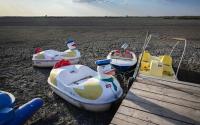Each of the 11 new stem cell lines that they made were created by taking genetic material from the patient and putting it into a donated egg.
The resultant cells were a perfect match for the individual and could mean treatments for diseases like diabetes without problems of rejection.
The study, published in Science, has been hailed as a major advance.
Meanwhile, UK scientists at Newcastle University announced they had successfully produced a cloned embryo using donated eggs and genetic material from stem cells.
Although a long way behind the Korean research, it was the first time a human cloned embryo had been created in Britain.
Critics said these "cloning" techniques are unethical.
Hurdles
And the Korean team admits much work is needed before stem cell techniques can be perfected.
The stem cell lines produced by the Koreans from patients with disase will likely also display some of the characteristics of that disease.
In some cases, might mean they would need to be manipulated before being used as a treatment, said Dr Gerald Schatten, from the University of Pittsburgh, US, who worked with the Seoul National University team.
Researchers will also need to develop ways to efficiently direct the growth of stem cells into stable cell types, said Professor Woo Suk Hwang and his colleagues who successfully cloned human embryos last year.
"Scientists must also find a way to remove the remaining animal components from the laboratory procedures," they said.
Currently, scientists use animal enzymes to isolate the cells needed for such research.
They also stressed that the technique should not be used to make genetically identical babies - called reproductive cloning.
The technique
Stem cells are primitive "master" cells that can be programmed to become many kinds of tissue.
To make them patient-specific, the researchers took DNA from the skin cells of volunteers and put this genetic material into donated human eggs which had had their own genetic material removed.
These eggs were grown to a very early stage of embryo development, around six days, when they were still just small balls of cells. The scientists then extracted the stem cells.
When the researchers examined them in the laboratory, the stem cells appeared to be immunologically compatible to the individual who donated the DNA.
Professor Chris Higgins, from the UK Medical Research Council, said: "It really is an advance. It offers the possibility of stem cell therapies without rejection.
"Also, the scientists have improved their technique and reliability of stem cell transfer."
Professor Ian Wilmut, from the Roslin Institute in Edinburgh and creator of Dolly the sheep, said: "These new observations make a very significant and important step forward toward the use of cells from cloned human embryos for research and therapy."
Roger Pedersen, Professor of Regenerative Medicine, University of Cambridge, said the work provided "ample evidence" for the feasibility of replacing the genome of a human egg with that of an adult body cell.
And Professor Alison Murdoch, Chair of the British Fertility Society, and Dr Miodrag Stojkovic, Deputy Director of Centre for Stem Cell Biology and Developmental Genetics in Newcastle, said: "We are delighted. The promise of new treatments based on stem cell technology is moving nearer to becoming a realistic possibility."
But Julia Millington, of the ProLife Alliance in the UK, said: "Cloning for research purposes, which involves the manufacture of human embryos destined for experimentation and subsequent destruction, is profoundly unethical.
"The manufacture and destruction of one cloned embryo is one too many, regardless of the number of eggs that are required.
"Experimentation upon human life at any stage of development has no place in a civilised society."
Dr Richard Nicholson, editor of the Bulletin of Medical Ethics, said: "I have considerable concerns. A large proportion of the population believes that embryos are a form of human life and that one is killing human life in order to produce these stem cell lines.
"There is an alternative, which is to explore further what we can do with adult stem cells obtained from places like the bone marrow."
Stem cell milestones
1960s: Research begins on stem cells taken from adult tissue
1968: Adult stem cells used to treat immunodeficient patient
1998: US scientists grow stem cells from human embryos and germ cells, establishing cell lines still in use today
2001: Embryonic stem cell turned into a blood cell
2005: Korean team develops stem cells tailored to match individual patients






